
Become a member
Join today and help protect nature, beauty and history – for everyone, for ever. Enjoy access to more than 500 places with National Trust membership.
An estate saved from almost certain demolition and lovingly revived
Lower Basildon, Reading, Berkshire, RG8 9NR

| Asset | Opening time |
|---|---|
| House | 11:00 - 16:00 |
| Grounds | 10:00 - 16:00 |
| Shop | 10:00 - 16:00 |
| Tea-room | 10:00 - 15:30 |
Last entry to the site is 3pm. House will be open from 11am to 4pm, last entry 3:15pm. Site closes at 4pm.
| Ticket type | With Gift Aid | Without Gift Aid |
|---|---|---|
| Adult (18+) | £20.90 | £19.00 |
| Child (5-17) under 5s free | £10.50 | £9.50 |
| Family (2 Adults and up to 3 children) | £52.30 | £47.50 |
| Family (One Adult) | £31.40 | £28.50 |
The play and ball run area is located just up from the shop.
During the winter period our carpark has reduced capacity. Please arrive early to avoid disappointment. We may have to intermittently close out entrance gates to avoid traffic on the main road. Bikes will not be allowed on site. If you are cycling to the property, you will need to leave your bike in the car park.
There is a bike rack in the main car park, as you enter on the right.
Dogs are allowed on leads in the grounds and gardens, but only assistance dogs are allowed in the mansion.
There is a picnic area near the stable yard and near the mansion which both have wheelchair accessible picnic benches available.
Our plant shop is outside the main shop. Please be advised that stock may vary due to seasons.
It's a 400-yard walk uphill to the house – a visitor buggy is available. House entrance is up 22 steps. Accessible toilets available. Uneven terrain on walking routes, which can become muddy. There's cattle in the parkland.
In stableyard and near mansion.
Designated mobility parking, 20 yards from ticket office. 400 yards walk to the gardens and mansion.
There are ramps at the entrance.
Partly accessible grounds, loose gravel paths, slopes, and cobbles. Steep hill from car park to gardens. There are uneven pathways throughout gardens and parkland as well as gravel pathways, steps and tree roots.
We have accessible picnic benches for visitors using wheelchairs and seating areas around the stable yard and formal garden. Seating is available in each room of the house.
Access to upper floors: Stair Climber machines on site allowing wheelchair access upstairs in the Mansion. Please call to pre-book on 01491 672920 or email stairclimberbookingbasildonpark@nationaltrust.org.uk. Please be aware that we ask for 7 days’ notice prior to your visit.
The entrance to the showrooms in the mansion is on the First Floor, an additional 22 steps from the Ground Floor on a stone staircase.
Visitor buggy from the stableyard to the mansion available. Please note the buggy depends on volunteer availability.
There is a wheelchair available from visitor reception for the gardens, and one for house visits.
Take a look at the events coming up at Basildon Park.

Discover why Basildon Park is the ideal place for children play, discover nature and go on adventures in the school holidays.
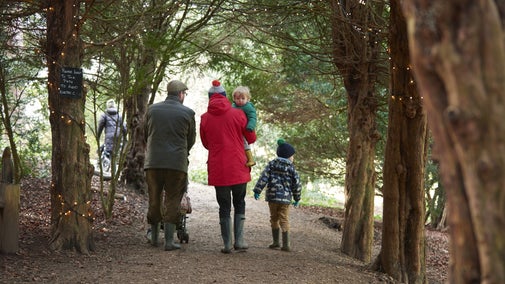
Basildon Park is a two pawprint rated place. There’s plenty of space to walk and trails to explore. Dogs are welcome on leads in the garden and parkland year-round.

Discover the opulent styling and artistic treasures that make the house at Basildon Park a signature 18th-century Palladian mansion, including some quirky details.
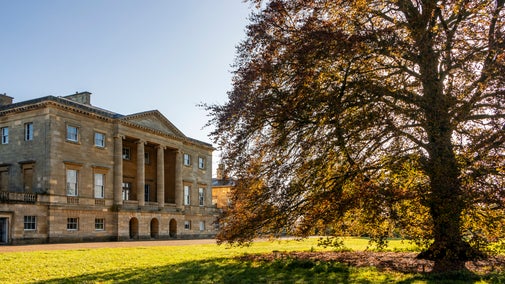
Experience the enchantment of the season at Basildon Park through the magic of ballet.

An 18th-century Palladian-style mansion, restored by Lord and Lady Iliffe after being requisitioned in the World Wars.
A 400-acre park with four waymarked walks, World War Two Nissen Hut remains, historic trees and views of the house.
Formal garden designed in the mid-18th century by David Brandon, featuring Lady Iliffe's rose garden and the restored terrace balustrade.
Main tea-room in lower entrance hall of the house is open daily.
The shop is in the stableyard and also contains a second-hand bookshop and reading nook.
Visitor Reception is located in the historic stableyard, with staff and volunteers on hand to help with any queries.
The wild play area for little ones is next to the stableyard, with more den building areas out on the estate.
Discover the opulent styling and artistic treasures that make the house at Basildon Park a signature 18th-century Palladian mansion, including some quirky details.

Discover the beautifully laid out, restored grounds that surround the house at Basildon Park. Take in the views from the terrace and pause awhile under the thatched Umbrello seat.
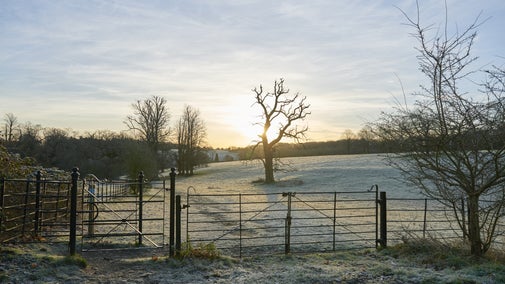
Explore the wider estate on a parkland walk. Choose from one of four trails that are designed for different ages and abilities. Take in the views of the 18th-century Bath-stone house as it glows in the distance.
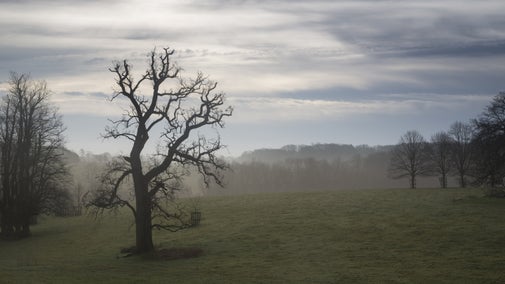
Discover why Basildon Park is the ideal place for children play, discover nature and go on adventures in the school holidays.

Discover beautiful views on this three mile circular walk around the meadows and woodlands that form the backdrop to the village of Streatley.

Enjoy a 7-mile circular walk around rural West Berkshire, near Streatley, taking in a variety of landscapes, wildflowers and butterflies.

Enjoy food and drink and buy a reminder of your day out on your visit to Basildon Park. Pick up a tasty treat in the tea-room or grab a gardening must-have in the shop.

Experience the enchantment of ballet at Basildon Park with beautifully decorated house and gardens featuring classic ballet elements and festive themes to inspire your Christmas spirit.
Whether you want to put years of skills and experience towards our cause or just want to try something brand new, we'll have a role to suit you.
Sitting elegantly in 162 hectares (400 acres) of historic parkland and gardens, this 18th-century house was purchased by Lord and Lady Iliffe in the 1950s, when it was de-requisitioned after the Second World War. With extraordinary vision, the Iliffes brought Basildon Park back to life, acquiring a collection of fine furnishings and carefully selected Old Masters.
The wooded parkland offers glorious seasonal colour, with spring bluebells, summer buttercups and autumn leaves, while the landscape has been carefully restored to offer wonderful views, peaceful trails and picnic places, with areas for children to run and play. Winter walks are a must.
Follow the rise and fall of Basildon Park from aspirational 18th-century beginnings to its decline after the Second World War and how its fortunes recovered in the 1950s.

Discover which places were used as filming locations for the third series of Netflix's lavish Regency-era drama Bridgerton and the spin-off series Queen Charlotte: A Bridgerton Story.
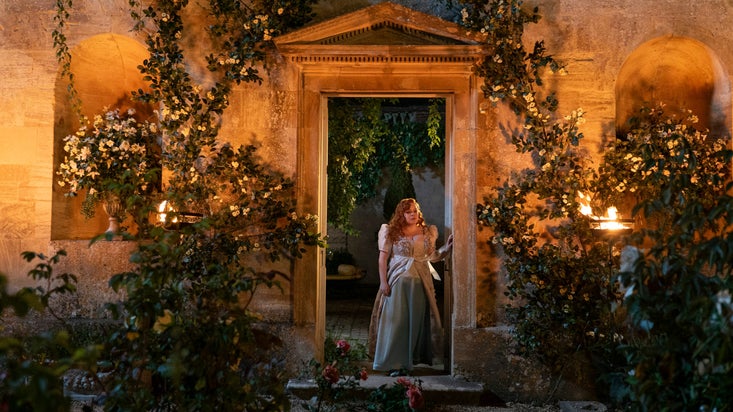
Explore the objects and works of art we care for at Basildon Park on the National Trust Collections website.

Discover some of the behind-the-scenes work at Basildon Park, from cleaning with hog’s hair to restoring exotic collection items.

Find out about volunteering at Basildon Park. With opportunities inside and out, there’s a range of roles at this special place.


Join today and help protect nature, beauty and history – for everyone, for ever. Enjoy access to more than 500 places with National Trust membership.
By sharing your email address you’re agreeing to receive marketing emails from the National Trust and confirm you’re 18 years old or over. Please see our for more information on how we look after your personal data.